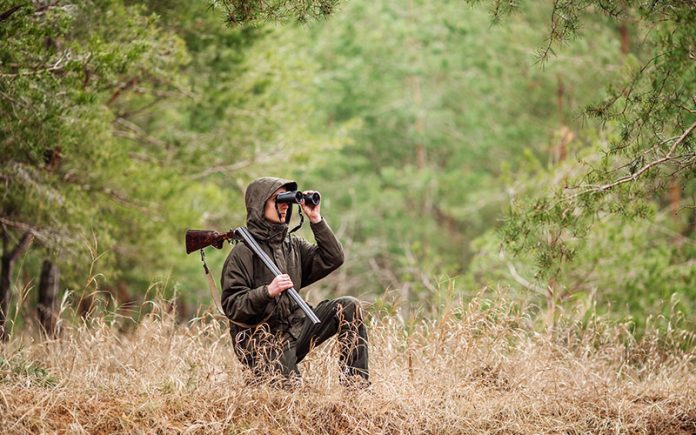Hunting with bows and arrows for the first time through the woods is all fun and thrill until you realize you don’t have any binoculars while your teammates do. You also notice that your mates are getting better over time and some of them often end up catching deer, which could have been yours if only your eyesight was more precise. Although this might feel awful, you need not worry about it. As a beginner in the world of hunting, you just made a simple amateur mistake. Real hunters use top-quality hunting binoculars to spot game which otherwise would be very difficult to spot.
Not all binoculars are suitable for hunting though. Imagine you bought a binocular which ultimately didn’t come in any use. What if you ended up shooting an arrow at one of your mates instead of a deer nearby? In the worst case scenario, this act would land you in prison. If you want to save yourself from jail time, it is important to know what binoculars to use and how to use them for hunting.
Specifications to Look into When Buying Hunting Binoculars
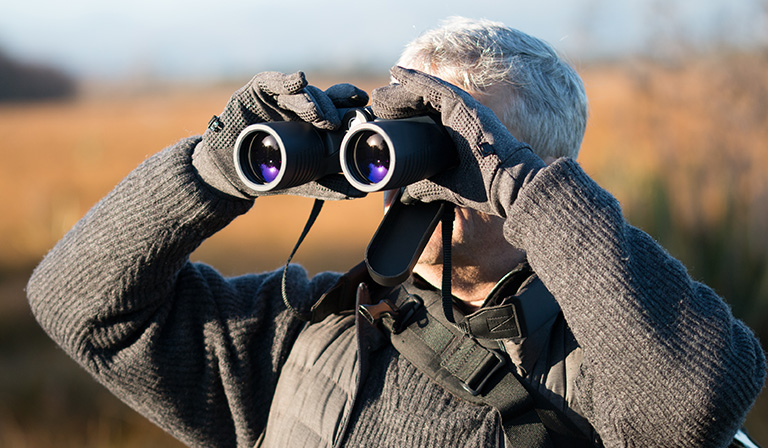
You cannot just pick a pair of hunting binoculars and head straight to your shooting game. You’ve to look into some specifications and details that would suit the forest environment, amount of lighting and time of the day, your eyesight, plus your hunting skills. You will also want binoculars that are useful even in harsh weather conditions. If you’re an amateur, you should consider the following details before your next hunting spree.
- Magnification Power and the Size of Lens Diameter
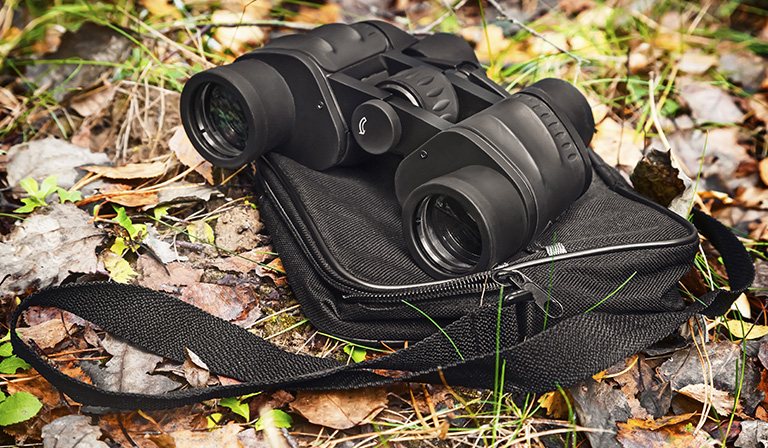
When you buy hunting binoculars, you’ll see numbers like 8×32 or 10×32. The first number represents the magnification power, which means using binoculars you can magnify a visible object 8 or 10 times closer though the object could appear blurry. If the object is moving, the blurriness will not help even if you see the object close. The second number refers to the size of the lens diameter, which is 32 mm. You’ve to consider the size of the lens diameter in order to focus on the object.
In case of hunting, the binocular magnification power should be between 7x to 10x, or 12x in case of open space hunting. You can try binoculars that can switch between various magnification powers, depending on your needs.
Buying binoculars with a magnification power between 7x to 10x is the best choice because these binoculars provide more stable images, are less affected by shaking hands, and provide wider perspectives as well as brighter images during dawn and dusk. Lastly, you will get some eye relief, allowing you to wear glasses if you need them.
The size of the objective lens will determine how clear and bright the binocular images will be. This is particularly important because most hunting games take place at dusk or dawn. The larger the lens, the clearer the image. But this also means they will be heavier. Their sizes range from 25mm to 50mm. and if you’ll be moving around very often, crawling, tree standing or stalking, you should consider lighter binoculars, preferably 32mm or below. But again that would compromise details in imaging. Usually, 42mm is a good choice for portability and clear imaging. If you’re planning to do night hunting, you should consider the lens with night vision capabilities.
- Weather Conditions
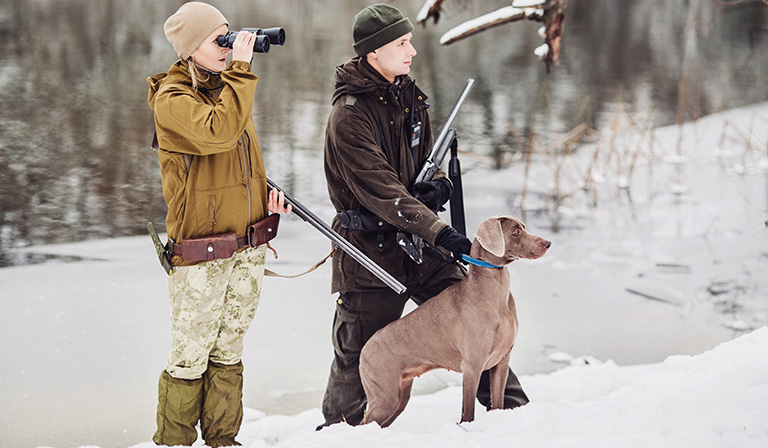
During the hunt, you could be subjected to rain and storms, fog and snow. Make sure your hunting binoculars are water-and fog-proof. Binoculars could get internally clogged with fog in humid conditions. Your binoculars should also be resistant to grime, dirt, and dust. If they have a rubber coating, it is a plus point since this would protect them from scratches and bumps. A rubber coating also provides better grip handling. Some binoculars come with rain shields that protect the lens from rain and dust.
- Field of view
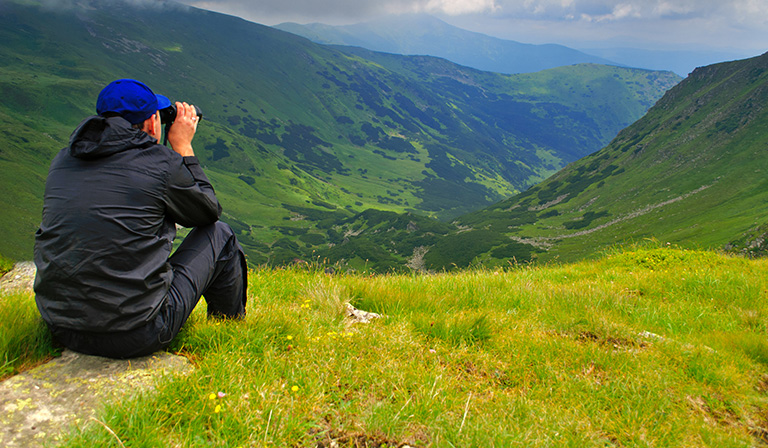
Field of view is how far the lens can visualize, measured in yards. The higher the magnification power, the closer the object will be; thus, the field of view would be smaller. This is actually a disadvantage if you and your target both would move around very often. In this case, you should choose a pair of binoculars that has a smaller magnification power so that you can have a larger field of view for your movements.
- Size of the Relative Brightness Index and Exit Pupil
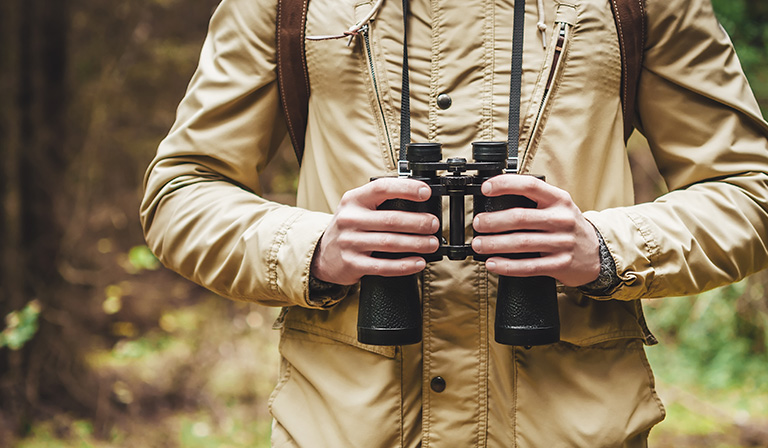
Exit pupil is the ratio of the size of the objective lens to the magnification factor. A higher exit pupil size means more light would enter your eyes, which would allow for better visualization. You might also want to check your eye dilation size. Most adult hunters pick 10×42 binoculars for hunting, having dilation sizes ranging from 4 mm to 7 mm. Elderly people have shorter dilation sizes, around 4mm, while those of the young adults are around 7 mm.
- Prism types
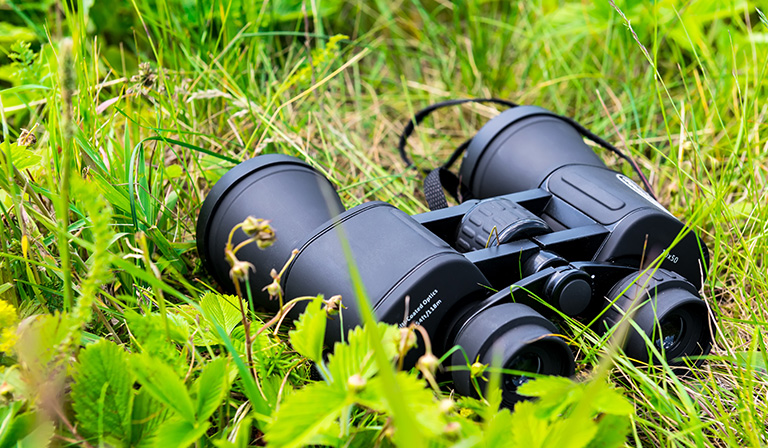
Two types of prisms are usually seen in binoculars, either roof prisms or porro prisms. Roof prisms are more lightweight and easier to use due to having slim dimensions. They’re able to reflect light five times and keep direct contact with the eyepiece. On the other hand, Porro prisms require larger bodies and reflect light four times. These are, however, more affordable and do not stay in direct line with the eyepiece.
- Eye Relief
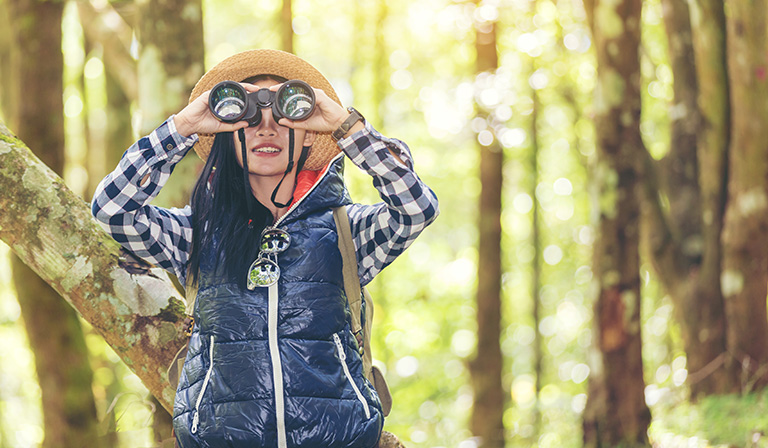
Eye relief is an important issue, especially for those people who need to wear glasses. It is the distance at which can you hold the binoculars between the eyepiece and your own eye to see an image clearly. A pair of binoculars with poor eye relief means a lower field of view. However, wearing glasses would lower the field of view more, so you should pick binoculars with better eye relief support.
- Optical Coating
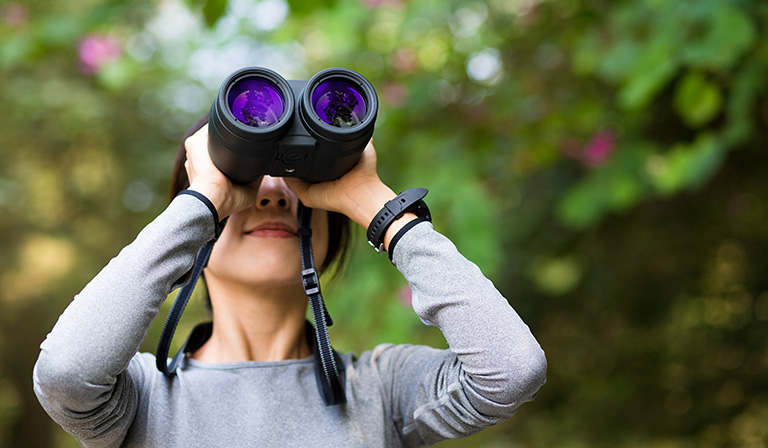
Objective lens often comes with an optical coating that allows clearer and brighter images, reduces light reflection and glare. There are various types of optical coating, such as full coating, multi-coating or full multi-coating. If you have to invest a bit more to get brighter images you should consider having a better optical coating.
- The Cost and The Brand
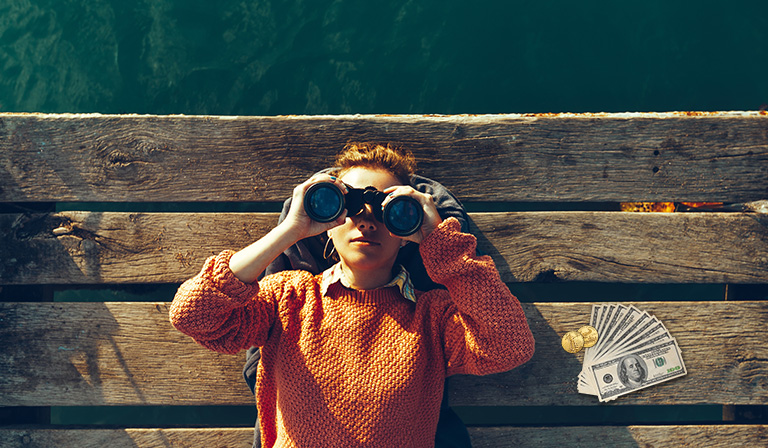
Lastly, you should consider the manufacturing brand of your preferred pairs of binoculars as well as their prices while buying binoculars for hunting. Binoculars can last a very long time, so you won’t have to spend much if you know what your needs are. However, if you want the best of the best, you might as well make more investments to buy binoculars with extra features and have a thrilling hunting experience.
Finally, binoculars are invaluable if you want your hunting experience to be perfect and thrilling. A hunter’s binoculars not only help them locate the target and aim to kill, but they also provide a better view, especially during the night time. To reap off the maximum benefits, you should consider binoculars that are suitable specifically for your needs. Padded cases and harness-type straps are available these days, which protect your binoculars while you’re moving and keep them close to your body without putting too much pressure on your body. So, make sure you buy your pair of binoculars with these cases and straps. Your happy hunting days will begin once you buy those perfect binoculars for yourself!


